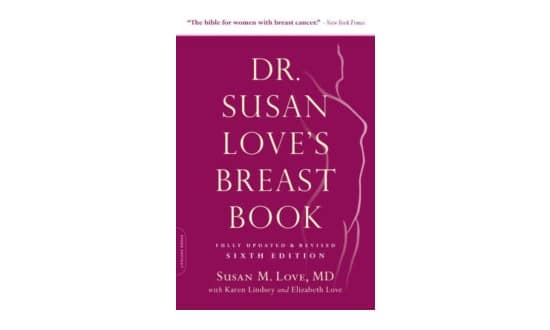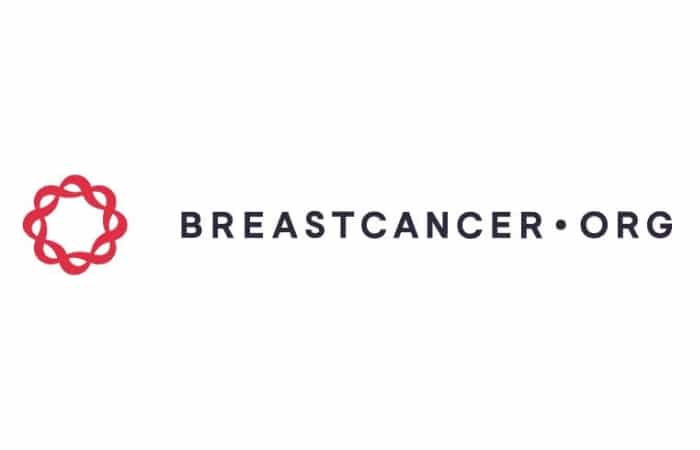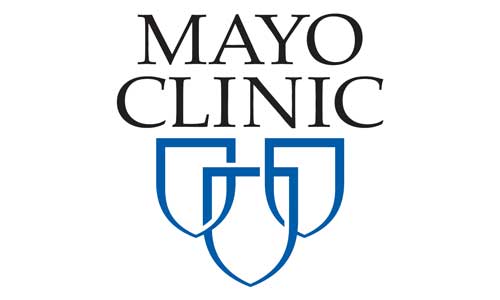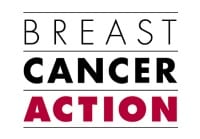Preparing for breast cancer treatment
Top practices and therapies we have reviewed for use while preparing for cancer treatment
These practices and therapies have at least modest evidence for the medical benefits listed. We add to this list as we complete new reviews of practices and therapies.
On this page
You may need to choose among treatment options. Then once you’ve decided on a treatment course, you may need to learn more about how to get yourself ready for treatment. These handbooks provide more information to guide you.
An integrative approach to conventional care
Integrating the best of evidence-based conventionalthe cancer care offered by conventionally trained physicians and most hospitals; examples are chemotherapy, surgery, and radiotherapy treatment, self carelifestyle actions and behaviors that may impact cancer outcomes; examples include eating health-promoting foods, limiting alcohol, increasing physical activity, and managing stress, and complementaryin cancer care, complementary care involves the use of therapies intended to enhance or add to standard conventional treatments; examples include supplements, mind-body approaches such as yoga or psychosocial therapy, and acupuncture therapies may be a sensible way to bolster the effects of conventional treatment and improve your tolerance to the side effects so you can complete your treatments. This integrative approach also makes sense for reducing the risk of recurrence after treatment and possibly extending your life, as described elsewhere in this handbook.
When considering cancer treatment, you may want to be sure you have answers to some key questions:
- What are my chances of actually living longer if I use this treatment?
- What are the likely side effects, and how long will they last?
Another question to ask is “What are the risks if I delay treatment?” Delaying breast cancer treatment by a month or more increases the risk of dying.1Hanna TP, King WD et al. Mortality due to cancer treatment delay: systematic review and meta-analysis. BMJ. 2020 Nov 4;371:m4087; Reinberg S. Delaying cancer care costs lives. HealthDay. November 5, 2020. Viewed November 8, 2020.
Conventional treatment for breast cancer is becoming more and more specific, depending on the type, stage, and characteristics of a person’s cancer. For a growing number of women, treatment is effective or even curative, especially in the case of early-stage cancer.
These sites are a starting place for the information on conventional therapies related to breast cancer.
A few key points from these guidelines:
- Getting the diagnosis and the tumor characteristics right is absolutely key to figuring out the best conventional treatment approach.
- According to breast cancer medical advocate and CancerChoices advisor Gwen Stritter, MD, the NCCN guidelines are really good for about 85% of primary [non-metastatic] breast cancers. Following the guidelines will result in response to treatment for those 85% of patients. Since early-stage primary cancer is likely curable by following the guidelines, the risk/benefit analysis does not favor straying from them.
- A conventional oncology doctor is not likely to stray from the NCCN guidelines.
- Although advanced breast cancer is incurable in most cases, steady improvements are seen in survival with standard therapies as well as the newer targeted agents. We at CancerChoices know of many women who have lived for years with recurrent or advanced breast cancer behaving like a chronic illness kept at bay at least in part by conventional treatment.
This is not to say that conventional treatments are magic bullets that get in there, destroy the cancer cells, and get out without being noticed. All these treatments—surgery, chemotherapy, radiation therapy, hormone therapy, and immunotherapy—come with costs: physical, cognitive,2Wagner LI, Gray RJ et al. Patient-reported cognitive impairment among women with early breast cancer randomly assigned to endocrine therapy alone versus chemoendocrine therapy: results from TAILORx. Journal of Clinical Oncology. 2020;38(17):1875-1886. emotional, social, spiritual, and financial. And they don’t work for everyone all the time.
Planning for breast cancer surgery
Having breast cancer surgery and possible reconstruction may involve extra consideration and care. Planning ahead to minimize pain or discomfort and reduce the risk of infection can create a better experience and better clinical outcome.
Hormone therapy before surgery
From medical advocate, breast cancer survivor and CancerChoices advisor Gwendolyn Stritter, MD
Anti-estrogen therapy, typically started after surgery, prevents breast cancer relapse and death in ER+ cancers. However, some patients do not relapse even if they do not take anti-estrogen medication. Other patients will relapse despite taking them. This means a significant number of patients taking anti-estrogens suffer from the adverse effects of treatment without the benefit of improved outcomes. Taking anti-estrogens before surgery enables your healthcare team to determine if you would respond to such treatment. This can save five to 10 years of ineffective therapy for those who would not respond. Another benefit of neoadjuvant hormone therapy: good outcomes despite less aggressive surgery, such as lumpectomy instead of mastectomy.
It is not surprising that there is a groundswell of support in some centers for giving anti-estrogens before surgery in women with ER+ breast cancer.3Reinert T, Gonçalves R, Ellis MJ. Current status of neoadjuvant endocrine therapy in early stage breast cancer. Current Treatment Options in Oncology. 2018 Apr 16;19(5):23. This allows the patient and the oncology team to know whether a particular medication is effective against the breast cancer and, if it does not induce a partial or complete remission, allows switching to a more active treatment regimen before surgery.
I had tamoxifen before surgery for my ER+ breast cancer, and seeing most of my cancer disappear on MRI over the ensuing 6 months was very gratifying. Knowing the tamoxifen worked so well kept me highly motivated to continue it for the next 5 years.
Radiation before surgery
Researchers at The University of Texas MD Anderson Cancer Center showed that administering radiation before mastectomy allowed for concurrent breast reconstruction surgery, which reduced the number of operations required, minimized treatment delays, and improved patient satisfaction.4Radiation before mastectomy cuts time delays for reconstructive surgery in breast cancer patients. MD Anderson Cancer Center. April 5, 2024. Viewed April 21, 2024.
Making your best possible breast surgery experience
When planning for surgery, several decisions and actions can reduce the risk of postoperative complications. Such complications, including these, while not occurring in the majority of patients, do affect many:
- Infection
- Seroma (fluid collection in the surgical area
- Hematoma (blood collection in the surgical area)
- Reconstructive failure (loss of implant or flap)
- Pain
Of these complications, infection is one for which patient decisions and behaviors have a big impact. Also the type of surgery makes a difference—reconstructive procedures have a much higher complication rate than lumpectomy or simple mastectomy. We will be highlighting ways to avoid infection and the reconstructive techniques that are least prone to complication.
Most people are aware that complications from surgery cause increased hospitalizations and healthcare spending. But many are not aware that they can delay important time-sensitive adjuvant treatment such as chemotherapy or radiotherapy, resulting in worse survival.5Kupstas AR, Hoskins TL et al. Effect of surgery type on time to adjuvant chemotherapy and impact of delay on breast cancer survival: a National Cancer Database analysis. Annals of Surgical Oncology. 2019 Jul 22. Complications also reduce patient satisfaction with the procedure itself and with the cosmetic outcome.
Fortunately, intensive study has found ways to reduce complications. Surgeons and patients now have a lot of information that will help them. First of all, it is important to know whether you or your surgical procedure have specific factors that increase your risks for problems.
Patient characteristics and complication rates
Some patient characteristics and behaviors are associated with higher risk of complications after surgery:6Wilkins EG, Hamill JB et al. Complications in postmastectomy breast reconstruction one-year outcomes of the Mastectomy Reconstruction Outcomes Consortium (MROC) study. Annals of Surgery. 2018 Jan; 267(1):164-170); McCarthy CM, Mehrara BJ et al. Predicting complications following expander/implant breast reconstruction: an outcomes analysis based on preoperative clinical risk. Plastic and Reconstructive Surgery. 2008 Jun;121(6):1886-92; Sada A, Day CN et al. Mastectomy and immediate breast reconstruction in the elderly: trends and outcomes. Surgery. 2019 Aug 5. pii: S0039-6060(19)30357-5; Block KI. Life over Cancer: The Block Center Program for Integrative Cancer Care. New York: Bantam Dell. 2009.
- Obesity, having a body mass index of 30 or higher
- Tobacco smoking
- Age 65 or older
- Hypertension
- Compromised immunity or inflammation
- High blood sugar (hyperglycemia) poorly controlled diabetes
Addressing one or more of these factors before surgery decreases complications. Having more than one of these risk factors multiplies the risk of complications.
Surgery options and complication rates
Infection rates for breast reconstruction after mastectomy can exceed 30%.7Washer LL, Gutowski K. Breast implant infections. Infectious Disease Clinics of North America. 2012 Mar;26(1):111-25. Complications after surgery are higher in these situations:8Wilkins EG, Hamill JB et al. Complications in postmastectomy breast reconstruction one-year outcomes of the Mastectomy Reconstruction Outcomes Consortium (MROC) study. Annals of Surgery. 2018 Jan; 267(1):164-170; Ooi A, Song DH. Reducing infection risk in implant-based breast-reconstruction surgery: challenges and solutions. Breast Cancer: Targets and Therapies. 2016 Sep 1;8:161-72; O’Connell RL, Rattay T et al. The impact of immediate breast reconstruction on the time to delivery of adjuvant therapy: the iBRA-2 study. British Journal of Cancer. 2019 Apr;120(9):883-895.
- Immediate reconstruction following mastectomy
- Flaps (LD, TRAM or DIEP)
- Bilateral procedures
- Radiation therapy during or after reconstruction
- Chemotherapy
Some institutions will strongly advise delaying reconstruction until after radiation therapy for those who currently smoke simply because performing an immediate breast reconstruction after mastectomy doubles the complication rate. Age is also a factor regarding reconstruction: The overall complication rate is 12.6% for women older than 65 who choose immediate reconstruction after mastectomy, compared with 6.8% for those under 65.
Neoadjuvent or adjuvant treatments, such as chemotherapy or radiation (given prior to or after surgery) may not only increase the risk for infection but may also cause further tissue damage. If you need these treatments, talk with your doctor about the best timing of reconstructive surgery in relation to other treatments.9Department of Surgery. Breast Reconstruction. University of California San Francisco. Viewed April 11, 2019.
Surgical infection rates vary considerably for different types of surgery, among different hospitals, and among different surgeons (or even with the same surgeon as he or she gains experience). Longer hospital stays are also associated with higher infection rates.
Dr. Susan Love advises: “One thing that keeps people in the hospital after mastectomy is learning how to manage a drain. If possible, ask your doctor to show you and your family the drain and how to empty it at the pre-op visit.”10Love SM. Dr. Susan Love’s Breast Book. 6th edition. De Capo Press. 2015. p. 342.
Reducing the risk of complications: what you can do before your surgery
First, find out how much time you can take before surgery to develop a plan and prepare for surgery.
Preparing your body:
- Discuss which risk factors you can improve before surgery and come up with a plan of actions to take. Actions may include stopping smoking or controlling high blood pressure, stress, high blood sugar, and other conditions
- Consider practicing stress management in the weeks leading up to surgery. Many people find imagery practices specific to preparing for surgery to be helpful.
- In addition to effective managing stress, use emotional support, counseling and medication before surgery as appropriate to help reduce psychological stress.
- If you typically clean an animal litter box or bird cage, find someone else to clean it before and for several weeks after your surgery.
Optimizing your surgical context:
- Check postoperative infection rates for the hospital where your surgery will be performed at Medicare.gov—Hospital Compare ›. While complication rates for individual surgeons are available for many types of surgery, they are not published for breast surgery. Infection rates tend to be higher on average with less-experienced surgeons (a pretty good rule of thumb for having good experience is to consider surgeons who have done at least four per month of your specific type of surgery for five years).
- Inform your surgical team of any supplements, herbs, or other therapies you’re using prior to surgery. Some complementary therapies may need to be stopped before surgery, especially those that promote bleeding (such as aspirin) or sleepiness (such as melatonin). See more in the section titled “Natural products, medications, and surgery” in Preparing for surgery ›
- If you have financial or social barriers to good care before and after your surgery, ask to be referred to an oncology social worker or oncology navigator for assistance.
- Work with your surgeon to determine the timing of reconstructive surgery. If you’ll be receiving radiation or chemotherapy, consider initiating those treatments before reconstructive surgery.
- Schedule your surgery as an outpatient (ambulatory) procedure rather than as an inpatient hospital stay if appropriate.
- Discuss your options for anesthesia and pain control after surgery; see Surgery: An Integrative Approach ›
Immediately before surgery:
- Avoid becoming dehydrated.
- See if you can postpone surgery if you develop a cold, flu, pneumonia, or other infection shortly before your surgery.
Preparing for better healing after surgery
Plan ahead to improve your surgery outcomes, reduce pain, and promote healing.
Steps you can take to reduce your risk of complications:
- Consult an integrative physician or licensed naturopath (preferably one who is certified in oncology) to recommend approaches to maintain healthy immune function to improve your wound healing and reduce your risk of infection.
Deciding on breast reconstruction
You do not need to undergo breast reconstruction after mastectomy. In fact, more than half of people with breast cancer do not elect to have reconstruction after mastectomies, according to an article in the Oncology Nursing Society Voice.11Becze E. Clinician biases leave patients feeling unsupported when electing for flat closure mastectomies. ONS Voice. May 9, 2023. Viewed May 10, 2023. Some women who begin reconstruction never complete the process—a phenomenon called “reconstruction burnout”12Halani SH, Jones K, Liu Y, Teotia SS, Haddock NT. Reconstructive burnout after mastectomy: implications for patient selection. Plastic and Reconstructive Surgery. 2023 Jan 1;151(1):13e-19e. We encourage you to carefully consider all your options, discuss any concerns you have with your surgeon and oncology team, and take your time making a decision regarding reconstruction. Get a second opinion if you have concerns. Delaying a decision about reconstruction is not likely to lead to worse cancer outcomes.
Preparing for breast reconstruction: now more options
Two basic types of breast reconstruction are available after mastectomy:
- Breast implants
- Flap reconstruction using tissue from your own body to reconstruct the breast
Further options are available within those two categories.
Current discussion on implants involves subpectoral expander-based breast reconstruction. For many years, the standard has been to place the implants under the pectoralis major muscle (PMM), partially detaching that muscle. Although this implant position is thought to give a better cosmetic result, many women report problems due to partial injury of the PMM with subsequent muscular deficit, breast animation and postoperative pain.
Evidence supports another way to position breast implants: placing the implant above the PMM and covering it with a dermal matrix derived from pig tissue. The procedure is called prepectoral implant placement and complete coverage with porcine acellular dermal matrix (ADM). Evidence so far indicates this procedure provides good cosmetic results.13Sewell J, Sharima A et al. Pre-pectoral implant-based immediate breast reconstruction with Braxon Porcine Acellular Dermal Matrix: Is it safe with radiotherapy? European Journal of Surgical Oncology. 2018 Jun;44(6); Bettinger LN, Waters LM, Reese SW, Kutner SE, Jacobs DI. Comparative study of prepectoral and subpectoral expander-based breast reconstruction and Clavien IIIb score outcomes. Plastic and Reconstructive Surgery Global Open. 2017 Jul 26;5(7):e1433; Reitsamer R, Peintinger F. Prepectoral implant placement and complete coverage with porcine acellular dermal matrix: a new technique for direct-to-implant breast reconstruction after nipple-sparing mastectomy. Journal of Plastic, Reconstructive & Aesthetic Surgery. 2015 Feb;68(2):162-7. However, the use of ADM has been associated with higher rates of overall complications, seroma (a buildup of fluid where tissue has been removed), infection and reconstructive failure.14Kim JY, Davila AA et al. A meta-analysis of human acellular dermis and submuscular tissue expander breast reconstruction. Plastic and Reconstructive Surgery. 2012 Jan;129(1):28-41.
Use of breast implants in general (not specific to reconstructive surgery) is linked to an increased risk of anaplastic large cell lymphoma. The risk may be higher with textured breast implants.15Bankhead C. Breast implant-related lymphoma more common than reported. MedPage Today. December 2, 2022. Viewed April 3, 2023; Kinslow CJ, Kim A et al. Incidence of anaplastic large-cell lymphoma of the breast in the US, 2000 to 2018. JAMA Oncology. 2022;8(9):1354–1356. An increased risk of squamous cell carcinoma has also been reported.16UPDATE: Reports of Squamous Cell Carcinoma (SCC) in the Capsule Around Breast Implants—FDA Safety Communication. US Food and Drug Administration. March 8, 2023. Viewed April 4, 2023.
You and your surgical team need to assess risks and benefits carefully.
Dr. Deb’s operating room flash mob before her double mastectomy
Play videoHelpful links

Dr. Susan Love’s Breast Book ›
Includes an in-depth discussion of reconstruction options.

To learn more about the standard post-mastectomy breast reconstruction options, see an online decision aid called BRECONDA. Note that this aid does not mention prepectoral implants.
Antibiotic use and infection rates
Antibiotic prophylaxis for 24 hours following breast reconstruction reduced infection rates from 14.4% to 5.8%. No further benefit was found when continuing antibiotics past 24 hours.17Phillips BT, Bishawi M, Dagum AB, Khan SU, Bui DT. A systematic review of antibiotic use and infection in breast reconstruction: what is the evidence? Plastic and Reconstructive Surgery. 2013 Jan;131(1):1-13.
Surgery and cancer outcomes
Some studies in humans and animals suggest that surgery may be associated with metastasis18Horowitz M, Neeman E, Sharon E, Ben-Eliyahu S. Exploiting the critical perioperative period to improve long-term cancer outcomes. Nature Reviews. Clinical Oncology. 2015 Apr;12(4):213-26.—possibly from the inflammatory response of wound healing.
The flood of stress hormones associated with surgery may also contribute to the metastatic process after surgery. Through its anticancer and immunological activity, propranolol may reduce the rate of metastasis in breast and other cancers.
Studies involving cells and animals—and also preliminary human studies—indicate that use of the beta-blocker propranolol during the period around the time of surgery is linked to lower levels of metastasis.20Lee JW, Shahzad MM et al. Surgical stress promotes tumor growth in ovarian carcinoma. Clinical Cancer Research. 2009 Apr 15;15(8):2695-702.
Propranolol has been suggested a an addition to standard of care for nonmetastatic cancers as a strategy to reduce the rate of metastasis.22Pantziarka P, Bouche G et al. Repurposing Drugs in Oncology (ReDO)-Propranolol as an anti-cancer agent. Ecancermedicalscience. 2016 Oct 12;10:680. People not already using beta blockers who are diagnosed with early breast cancer may want to ask their oncology team whether to take beta blockers for a few days around the time of cancer surgery.23Hiller JG, Cole SW et al. Preoperative β-blockade with propranolol reduces biomarkers of metastasis in breast cancer: a phase II randomized trial. Clinical Cancer Research. 2020;26(8):1803-1811; Cote J. Could a common and inexpensive heart medicine (beta-blockers) help cancer patients live longer? Cancer Prevention and Treatment Fund. Viewed October 31, 2017; Weberpals J, Jansen L et al. Pre- and post-diagnostic β-blocker use and lung cancer survival: a population-based cohort study. Scientific Reports. 2017 Jun 6;7(1):2911.
Find general information about using an integrative approach to surgery in this separate handbook.
Planning for chemotherapy
Commentary: chemosensitivity testing
Tests are available to identify which drugs and natural products are more likely to be active against your cancer. Breast cancer medical advocate and CancerChoices advisor Gwen Stritter, MD, offers several considerations if you are thinking about chemosensitivity testing for breast cancer.
Strategies for chemosensitivity testing: early stage breast cancer
The NCCN guidelines that your oncologist will likely follow are really good for about 85% of primary (non-metastatic) breast cancers. Following the guidelines will result in an excellent response to treatment for those patients. Since early stage primary cancer is likely curable by following the guidelines, the risk-benefit analysis does not favor straying from them. But in the case where chemotherapy suggested by the guidelines is not likely to result in a significant treatment response, or if the chemo doesn’t work, it makes sense to order chemosensitivity testing. I usually allow for two failed guideline treatments in primary breast cancer before trying chemosensitivity testing. Occasionally, as in the case of a particularly aggressive breast cancer, I will order chemosensitivity testing after just one line of failed chemotherapy.
While chemosensitivity testing is very good at predicting what will work, it is best at predicting what will not work. After chemosensitivity testing, check your oncologist’s pick against your test’s ineffective list. If your oncologist’s choice is predicted to be ineffective, then share the test results and talk about using a different chemotherapy that is both in the guidelines and on the chemosensitivity effective list.
Most estrogen-receptor positive (ER+) breast cancers are unlikely to respond to chemotherapy. They typically respond well to hormone therapies which, unfortunately, cannot be tested in most chemosensitivity platforms. However, a small number of ER+ tumors with high Ki67 values or that are clinically aggressive will respond to chemotherapy. These may also be good candidates for chemosensitivity testing.
Recurrent local breast cancer
If a recurrent breast cancer is considered curable, the same cautions as for primary breast cancer apply. But in this case, consider chemosensitivity testing after just one line of failed chemotherapy.
Stage 4 (metastatic) breast cancer
In the case of metastatic breast cancer, sticking to the NCCN guidelines does not provide a cure. Consider doing chemosensitivity testing at the time metastatic cancer is diagnosed and use that as a guide for chemotherapy choices.
Where your oncologist might be coming from
Very few oncologists in the US will do chemosensitivity testing right off the bat in primary breast cancer. It is possible that chemosensitivity testing results will suggest using a drug that is not in the NCCN guidelines. If the oncologist strays from the guidelines in this case, he/she could open themselves to malpractice lawsuits.
However, if you move forward with chemosensitivity testing and show the oncologist the results, he/she may follow them, especially if the guideline therapy is predicted to fail.
Choosing to preserve fertility
Helpful link
DCIS treatment
From medical advocate, breast cancer survivor and CancerChoices advisor Gwendolyn Stritter, MD
De-escalation of DCIS treatment
60% of the patients with ductal carcinoma in situ (DCIS) would not progress to invasive breast cancer even without any treatment whatsoever. But not knowing which patient will progress, combined with the potential for metastasis in those who do progress, has understandably led oncologists to overtreat everyone in the hopes of improving the survival of the 40% who are at risk.
Fortunately, this is beginning to change as researchers are steadily showing ways to reduce DCIS treatment while maintaining excellent outcomes. Radiation therapy is a good example. Radiation therapy decreases relapse rates for DCIS, but it does not improve survival. For some patients, the reduction in relapse outweighs other considerations and they opt for radiation therapy. Now with the advent of genomic testing, oncologists are now actively researching tests such as Oncotype DX DCIS25Breastcancer.org: Another study confirms Oncotype DX DCIS recurrence score predicts recurrence. Breastcancer.org. July 24, 2015. Viewed November 9, 2018. and SweDCIS26London S. DCIS risk signature is validated in SweDCIS population. Oncology Practice. December 26, 2017. Viewed November 9, 2018. that help limit radiation therapy only to those who would have a high risk of relapse without it.
Preliminary data also show that even surgery can be avoided in low-risk DCIS. This research is compelling enough that an ongoing 50-state clinical trial of active surveillance vs. surgery is underway.
Sentinel lymph node biopsy (SLNB) may also be unnecessary in older women, adding no survival benefit. A large retrospective study of older women diagnosed with DCIS undergoing breast-conserving surgery found no difference in rates of recurrence, occurrence in the other breast or breast cancer mortality among those who did and did not have sentinel lymph node biopsy (SLNB). The researchers concluded that their findings don’t support routinely doing SLNB for older patients with DCIS having breast conservation surgery.27Hung P, Wang S-Y et al. Long-term outcomes of sentinel lymph node biopsy for ductal carcinoma in situ. JNCI Cancer Spectrum. 2019 Dec; 3(4):pkz052.
If you are an older woman with DCIS considering breast conserving surgery and your surgeon is suggesting SLNB, you may want to discuss the necessity of having SNLB, weighing the potential for side effects (such as lymphedema) against the benefits. Neither the National Comprehensive Cancer Network nor the American Society for Clinical Oncology recommend SLNB for women with DCIS having breast-conserving surgery.28Chalasani P, Kiluk JV et al. Breast Cancer Guidelines. Medscape. October 24, 2019. Viewed November 6, 2019.
It is very exciting to see the breast oncology field moving in the direction where surgery and radiation therapy are used only on the few patients who need them.29Martinez-Perez C, Turnbull AK et al. Current treatment trends and the need for better predictive tools in the management of ductal carcinoma in situ of the breast. Cancer Treatment Reviews. 2017 Apr;55:163-172.
Low-dose tamoxifen and DCIS
It turns out that the dose of tamoxifen you are taking may be much higher than needed. This research figured prominently at the December 2018 San Antonio Breast Cancer Symposium—for good reason. It was recently published in the Journal of Clinical Oncology.30DeCensi A, Puntoni M et al. Randomized placebo controlled trial of low-dose tamoxifen to prevent local and contralateral recurrence in breast intraepithelial neoplasia. Journal of Clinical Oncology. 2019 Apr 11:JCO1801779.
First, some background. Conventional medical research, especially cancer research, has a notable deficiency: a strong tendency to test only the “maximally tolerated dose” of any given research drug. This approach is lots cheaper and lots easier than testing two to four other doses to find the sweet spot (maximal effectiveness, minimal side effects). Accordingly, it has been known for quite a while that the standard dose of tamoxifen—20 mg—may be much higher than that necessary to prevent non-invasive breast “pre-cancers” such as DCIS, LCIS and atypical ductal hyperplasia (ADH) from progressing to invasive breast cancer.
A group in Italy randomized 500 women with non-invasive breast disease to take either 5 mg tamoxifen per day or none at all (placebo group) over the course of three years. They found the decrease in DCIS/LCIS recurrence and that of invasive breast cancer in the low-dose tamoxifen group to be equivalent to what we typically see with the 20 mg dose. They also saw a decrease in new breast cancers/pre-cancers in the other breast. But equally important, the risk of blood clotting and endometrial cancer was indistinguishable from that of the placebo group. Here’s the icing on the cake: the incidence of hot flashes and vaginal symptoms (dryness, pain during sex) was minimally increased over the placebo group.31DeCensi A, Puntoni M et al. Randomized placebo controlled trial of low-dose tamoxifen to prevent local and contralateral recurrence in breast intraepithelial neoplasia. Journal of Clinical Oncology. 2019 Apr 11:JCO1801779.
What’s not to love? Equal effectiveness and decreased side effects! But here are some cautions. This is a relatively small study that followed women to an average of only five years. So this protocol is not quite ready for prime time.
Having said that, here are the situations in which you should consider asking your oncologist about low-dose tamoxifen:
- You have LCIS, ADH or ER+ DCIS, and
- You are at higher risk for endometrial cancer, or
- You are at higher risk for blood clotting, or
- Because of intolerable side effects you plan to stop the tamoxifen 20 mg dose thereby increasing your risk of relapse or invasive breast cancer.
Getting yourself ready for cancer treatment
At this time, you may want to get yourself ready for treatment. What physical, emotional, mental, or spiritual preparation can you do to get yourself in your best shape for treatment? What logistics do you need to set up for transportation, home care, family care, work, finances, and more?
Also see guidance on what you can do to improve your well-being and outcomes in At any time during your cancer experience ›
Self care
Self care is the foundation of getting yourself in your best possible condition for treatment.
The evidence supporting the effects for this practice is listed in the full handbook available through the image link.
Moving More: good evidence
Find strategies for moving more in this handbook.
Cancer as a whole:
- More rapid recovery from surgery among people participating in exercise training before surgery (good evidence)
- Shorter hospital stays and substantially fewer complications from surgery among people participating in exercise training before surgery (good evidence)
Complementary therapies
A therapy may show a stronger effect or have more evidence in some situations than in others. The evidence supporting the effects for this therapy is listed in the full handbook available through the image link.
Support groups while preparing for treatment: modest evidence
Specific to breast cancer:
- Better well-being, better information before treatment, better attitude, and less helplessness/hopelessness among people with breast cancer engaging in online communities and groups (modest evidence)
How integrative experts approach care when preparing for treatment
Published programs and approaches
Lise Alschuler, ND, FABNO, and Karolyn Gazella
Alschuler LN, Gazella KA. The Definitive Guide to Cancer, 3rd Edition: An Integrative Approach to Prevention, Treatment, and Healing. Berkeley, California: Celestial Arts. 2010.
This book describes approaches for certain cancer types, or along with certain conventional therapy treatments, or for particular conditions such as insulin resistance.
Keith Block, MD
Block KI. Life over Cancer: The Block Center Program for Integrative Cancer Care. New York: Bantam Dell. 2009.
The integrative Block Program has recommendations to people who are at different places along the cancer continuum:
- Those who’ve been recently diagnosed
- Those in treatment
- Those who’ve concluded treatment and need to remain vigilant to prevent recurrence
Barbara MacDonald, ND, LAc
MacDonald B. The Breast Cancer Companion—A Complementary Care Manual: Third Edition. Self-published. 2016.
Naturopathic physician Barbara MacDonald provides information about breast cancer, its conventional treatment, and natural approaches to enhancing treatment, managing side effects, reducing risk of recurrence, and healthy living after cancer treatment is completed.
Gurdev Parmar, ND, FABNO, and Tina Kaczor, ND, FABNO
Parmar G, Kaczor T. Textbook of Naturopathic Oncology: A Desktop Guide of Integrative Cancer Care. 1st edition. Medicatrix Holdings Ltd. 2020.
This book provides information on the treatment of 24 cancers, plus the most effective treatments of the most common symptoms affecting cancer patients while they undergo chemotherapy, radiotherapy, or surgery.
Learn more
References







